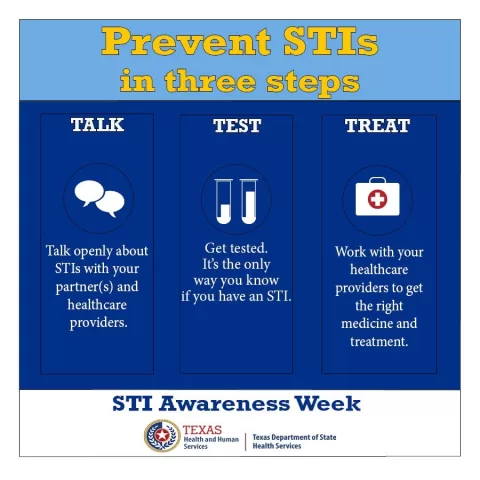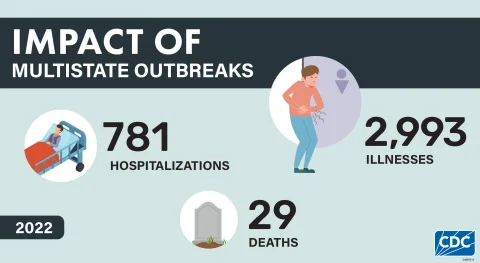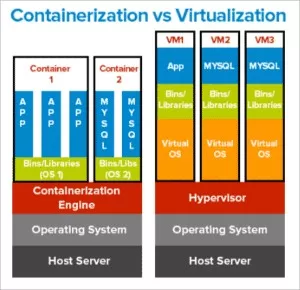TB contact investigation costs represent a critical yet often underappreciated facet of public health initiatives aimed at combating tuberculosis. These costs encompass the labor, diagnostic testing, and essential resources necessary for effectively tracing and managing individuals exposed to *Mycobacterium tuberculosis*. Despite the increasing burden of TB, systematic reviews of contact investigation expenses reveal a concerning gap in understanding the true financial landscape. In the United States, the overall mean cost per contact investigation has stark implications not only for public health budgets but also for the broader health system. Understanding TB diagnosis costs and the financial impact of ongoing contact investigations is essential for future planning and resource allocation.
The costs associated with investigating potential tuberculosis (TB) contacts are fundamental to a successful public health strategy aimed at controlling the spread of this infectious disease. Often termed the financial expenditures for TB program investigations, these costs include various components such as labor and the necessary diagnostics required for effective TB management. Investing in thorough tuberculosis investigation methods not only facilitates timely diagnoses but also saves public health resources in the long run. A comprehensive assessment of TB contact investigation expenses is crucial for understanding the overall economic implications of disease control efforts and ensuring that resources are appropriately allocated. The positive outcomes of such investigations underscore the need for ongoing funding and research related to public health costs incurred in TB management.
Understanding Contact Investigation Costs for Tuberculosis
Contact investigation is crucial in the fight against tuberculosis (TB), facilitating early diagnosis and treatment of those exposed to *Mycobacterium tuberculosis*. The costs associated with TB contact investigations can vary significantly, influenced by various factors like the geographical location, the complexity of the investigation, and the resources allocated. A systematic review demonstrates that the labor costs associated with conducting these investigations average around $175.94 per contact in 2022 dollars, highlighting the financial implications of public health strategies aimed at controlling TB.
Beyond labor costs, TB contact investigations also incur expenses related to diagnostic testing and chest radiography, which can produce a total mean cost of approximately $228.93 per individual investigated. The findings indicate that the overall cost for contact investigations in the U.S. reached $9.94 million in 2022 and accumulated to about $137.36 million from 2013 to 2022. Understanding these costs is essential for public health officials as they develop effective TB management strategies that optimize expenditure while maximizing outreach and impact.
The Role of Systematic Reviews in Assessing TB Investigation Costs
Systematic reviews play an instrumental role in evaluating the economic aspects of public health interventions, particularly regarding TB investigations. By compiling data from various studies, these reviews provide a comprehensive overview of contact investigation costs and can uncover trends and variations across different settings. The systematic review titled ‘Systematic Review of Contact Investigation Costs for Tuberculosis, United States’ assessed ten pertinent studies and illuminated key financial figures associated with labor, diagnostic tests, and overall investigation expenses.
In addition, the review highlights the need for further analysis of public health costs for TB on a regional level to identify more tailored strategies that can enhance resource utilization. This nuanced understanding can help policymakers allocate budgets more effectively while ensuring necessary interventions remain financially sustainable. A systematic approach to review costs also contributes significantly to improving overall TB control efforts in the public health sector.
TB Diagnosis Costs: Implications for Public Health Policy
The costs associated with TB diagnosis are an integral part of public health policy considerations. A major component of the overall financial burden of TB is related to the expenses incurred in contact investigations, which are designed to identify and treat individuals who have been exposed to the disease. The systematic review revealed that when diagnostic testing costs are included, the total mean costs increase significantly, drawing attention to the necessity of funding for TB management programs that include comprehensive testing protocols.
Given that the public health costs associated with TB can strain healthcare systems, it is vital for health policymakers to prioritize funding for effective TB diagnostic strategies. Investing in the elimination of economic barriers related to TB diagnosis not only improves health outcomes but also reduces the potential for TB outbreaks. Consequently, analyses of TB diagnosis costs must inform strategies to bolster public health frameworks and ensure that individuals at risk receive timely and adequate treatment.
Strategies for Optimizing TB Contact Investigation Expenses
Optimizing contact investigation expenses is essential for making efficient use of limited public health resources. Strategies include improving coordination between local health departments and community organizations, which can help streamline the contact investigation process and ensure quick identification of exposed individuals. Additionally, training healthcare workers to maximize the efficacy of contact investigations could lead to reduced labor costs and more effective engagement with affected communities.
Moreover, leveraging technology can significantly enhance the efficiency of TB investigations. By incorporating digital tools for data gathering and communication, public health officials can more effectively trace exposure routes, manage resources, and ensure that interventions are applied promptly. Such optimization strategies will not only cut down on contact investigation expenses but will also enhance the overall efficacy of TB control efforts in communities.
Evaluating Lab and Diagnostic Testing Costs in TB Investigations
Lab and diagnostic testing costs represent a substantial component of TB contact investigations. As the systematic review indicated, these costs can add significantly to the overall expenses incurred during the investigation process. Understanding the specific financial impact of laboratory tests and other diagnostic procedures is essential for public health officials aiming to allocate budgets effectively. With a mean cost per contact investigation reported at approximately $228.93, it is clear that diagnostic testing plays a pivotal role in the financial landscape of TB management.
To mitigate high diagnostic costs, healthcare systems can focus on fostering partnerships with laboratories and leveraging bulk testing agreements. Collaborations that encourage sharing resources and infrastructures may result in reduced per-test costs, ultimately benefiting the cost-effectiveness of TB investigations. This shift towards a more cost-efficient model for diagnostic testing can enhance public health interventions and lead to better management of TB within communities.
The Impact of Regional Variations on TB Contact Investigation Costs
Regional variations in TB contact investigation costs merit careful examination to facilitate improved public health outcomes. Factors such as local healthcare infrastructure, population density, and demographics can substantially influence both the direct and indirect costs associated with TB investigations. The mean labor costs noted in the systematic review, ranging from $175.94 per contact, can differ dramatically across regions, making localized analysis imperative for accurate budget allocations.
Addressing these regional disparities will help customize TB control strategies to meet specific community needs. Differences in TB prevalence and the availability of resources can inform resource allocation, enabling health officials to tailor interventions that are both economically viable and effective. This localized approach reaffirms the importance of systematic reviews as they provide essential insights into cost variances that can ultimately guide policy and funding decisions.
Formulating Effective Public Health Strategies for TB Control
Public health strategies aimed at controlling TB must be grounded in comprehensive cost analyses. By evaluating contact investigation costs through the lens of systematic reviews, health officials can make informed decisions about resource allocation, intervention effectiveness, and budgeting. Effective TB control requires not only a thorough understanding of direct costs but also an appreciation for long-term public health implications associated with both underfunding and over-expenditure.
Collaborative efforts among federal, state, and local health departments can lead to the development of innovative strategies that encompass contact investigation costs while expanding accessibility to care for at-risk populations. Implementing evidence-based approaches grounded in empirical data generates more robust TB control frameworks that can adapt to evolving public health challenges.
The Future of TB Contact Investigation in Public Health Initiatives
As we look to the future of TB contact investigations, ongoing assessment of both costs and methodologies will be crucial for enhancing efficiency and effectiveness. The findings from systematic reviews signify that investments in contact investigations not only serve as a mechanism for immediate health response but also build foundational support for long-term community health development. Embracing advancements in technology and data analytics can lead to improvements in contact tracing and resource allocation.
Moreover, cross-sector collaborations can better equip health communities to tackle TB outbreaks proactively. By integrating the efforts of public health organizations, community leaders, and healthcare providers, TB contact investigations can evolve to meet the needs of the population it serves effectively. This holistic approach ensures that financial investments made today lead to sustainable outcomes for public health in combating tuberculosis.
Addressing Cost-Effectiveness in TB Prevention Programs
Cost-effectiveness analysis is an integral part of developing TB prevention programs. By systematically reviewing contact investigation costs, health policymakers can identify which interventions yield the highest return on investment. For instance, understanding the economic burden of contact investigations, which averaged approximately $9.94 million in 2022, underscores the necessity for prioritizing cost-effective methods that balance public health impacts with financial sustainability.
With limited resources, ensuring cost-effectiveness in TB programs becomes critical, as it allows for broader dissemination of essential services while maintaining quality of care. Advanced analytical methods can aid in determining the most financially viable strategies and interventions for sustainable TB prevention. By focusing on efficiency and impact, public health initiatives can evolve to protect populations at risk of TB exposure effectively.
Frequently Asked Questions
What are the estimated TB contact investigation costs in the United States?
The estimated total cost for TB contact investigations in the United States amounted to approximately $9.94 million in 2022. Over the decade from 2013 to 2022, total costs reached about $137.36 million, highlighting the significant public health costs associated with TB contact investigations.
How are contact investigation expenses for tuberculosis determined?
Contact investigation expenses for tuberculosis are determined by analyzing labor costs, costs of diagnostic tests, and chest radiographs. The mean labor cost per contact is about $175.94, and when additional testing costs are factored in, the average total cost per contact investigation rises to approximately $228.93.
Why are TB investigation costs important for public health?
TB investigation costs are crucial for public health as they drive timely diagnosis and treatment of exposed individuals. By understanding contact investigation costs, health departments can allocate resources effectively to control the spread of tuberculosis and prevent future TB diagnosis costs.
What factors influence the costs associated with TB contact investigations?
Costs associated with TB contact investigations are influenced by factors such as the labor intensity of investigations, the setting in which they are conducted, and the types of diagnostic testing needed. Variation in these elements leads to differing expenses across studies, making systematic reviews essential for accurate cost assessments.
What range do TB diagnosis costs fall into during contact investigations?
The total costs for TB diagnosis during contact investigations vary significantly, with estimates ranging from $132.95 to $346.49 per investigation. Understanding these costs aids in comprehending the overall financial impact of tuberculosis on public health systems.
How can a systematic review of TB costs enhance public health strategies?
A systematic review of TB costs can enhance public health strategies by providing comprehensive data on the expenses involved in contact investigations. This information can guide budget allocations, improve resource management, and ultimately help in efforts to control and eliminate tuberculosis.
What is the role of labor costs in determining tuberculosis contact investigation expenses?
Labor costs play a vital role in determining tuberculosis contact investigation expenses, accounting for an average of $175.94 per contact. Since these investigations are labor-intensive, understanding labor costs is essential for accurately assessing the financial impact of TB investigations on public health.
What recommendations arise from analyzing contact investigation costs for tuberculosis?
Analyzing contact investigation costs for tuberculosis suggests a need for continued investment in public health resources, as well as recommendations for further regional analysis. This approach ensures that funding is effectively utilized to combat TB and minimize overall TB-related health costs.
| Key Point | Details |
|---|---|
| Background | Investigation of TB contacts is vital for diagnosis and treatment of TB in exposed individuals. |
| Study Overview | A systematic review analyzed TB contact investigation costs across 10 studies published between 1990 and 2024. |
| Key Findings | – Mean labor cost per contact: $175.94 (ranges from $79.97 to $293.50).n- Total cost per contact (including diagnostics): $228.93 (ranges from $132.95 to $346.49). |
| National Costs | In 2022, TB contact investigations cost approximately $9.94 million, totaling $137.35 million from 2013 to 2022. |
| Importance | Investing in contact investigations is crucial for TB control and reducing associated costs. |
Summary
TB contact investigation costs are a critical aspect of public health efforts to control tuberculosis outbreaks effectively. The systematic review highlights the necessity to continue assessing and investing in TB contact investigation resources for timely diagnosis and treatment. Given the rising costs associated with TB investigations and their essential role in preventing the disease, targeted funding and regional analysis are recommended to enhance public health initiatives.
The content provided on this blog (e.g., symptom descriptions, health tips, or general advice) is for informational purposes only and is not a substitute for professional medical advice, diagnosis, or treatment. Always seek the guidance of your physician or other qualified healthcare provider with any questions you may have regarding a medical condition. Never disregard professional medical advice or delay seeking it because of something you have read on this website. If you believe you may have a medical emergency, call your doctor or emergency services immediately. Reliance on any information provided by this blog is solely at your own risk.








